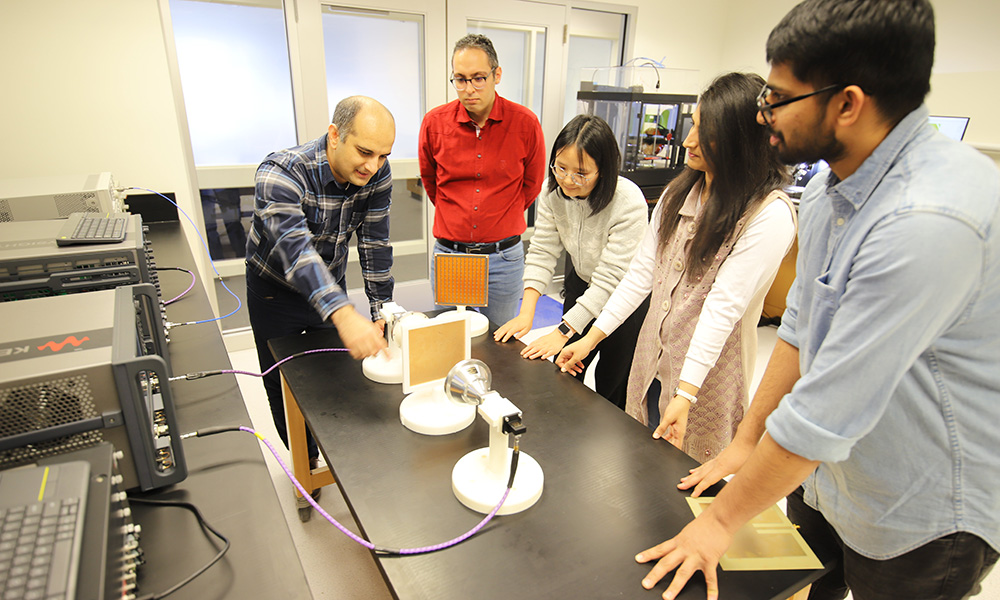
Younes Radi, assistant professor in electrical engineering and computer science, has been recognized as a Senior Member of the Institute of Electrical and Electronics Engineers (IEEE) for his contributions to research in applied electromagnetics and microwave engineering. He has also been chosen as an Associate Editor for the IEEE Transactions on Antennas and Propagation.
The IEEE is a global organization devoted to advancing technology for humanity’s benefit. Senior Membership is awarded to members who have made a significant impact within their fields. Only 10% of the IEEE’s more than 400,000 members hold this grade, which requires extensive experience, professional maturity, and documented achievements of significance.
Radi’s research focuses on the physics of fields and waves, with emphasis on tailoring electromagnetic wave-matter interaction. He has made significant scientific contributions on a broad range of topics in theoretical and applied electromagnetics, optics, and photonics, including artificial electronic and photonic materials, RF/microwave circuits, antennas, and propagation. His papers have been published in several high-impact journals including Nature Physics, Nature Communications, National Science Foundation, and IEEE family journals.
In addition to his Senior Membership and becoming an Associate Editor at IEEE Transactions on Antennas and Propagation, Radi has also been chosen by the University as one of the two faculty to compete in the 2024 Moore Inventor Fellows Program. These recent achievements reflect Radi’s focused efforts to re-establish Syracuse University as a renowned center of electromagnetics and microwave engineering research.

“Syracuse University has a rich history in applied electromagnetics and microwave engineering and was one of the leading universities in the world in this field,” says Radi. “I’ve been to many places in Europe and the US and have never seen a city like Syracuse where you can find so many high-end companies in applied electromagnetics and microwave engineering. This creates a great platform to bridge the research in my team with the local industry.
“I am extremely grateful to the department, college, and also the office of VPR for their amazing support in establishing a state-of-the-art RF and mm-Wave laboratory, which we have named ‘RadLab.’ This facility will pave the way for new collaborations with local industry and position Syracuse as a highly active hub for advanced research in applied electromagnetics and microwave engineering.”
